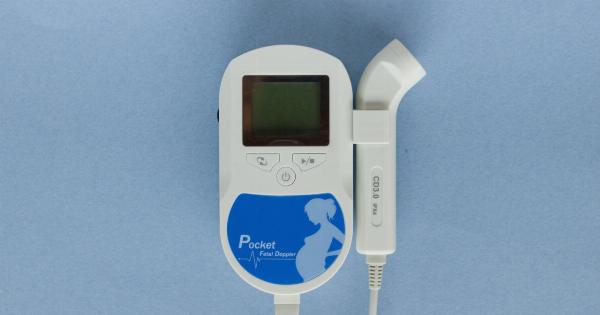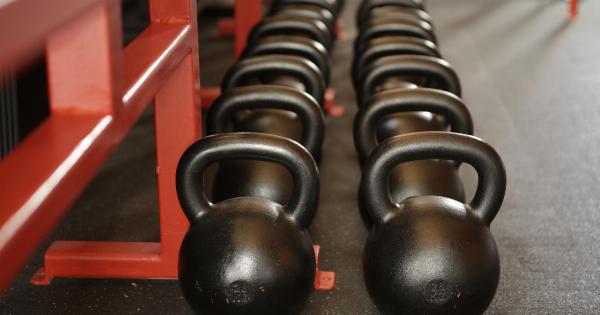Iron is an essential mineral that plays a vital role in many bodily functions. It is responsible for oxygen transportation, supporting cell growth, and maintaining overall health.
However, some individuals struggle with iron deficiency, where their body does not have enough iron to function optimally.
If you are one of those individuals who constantly battle iron deficiency, exercising regularly can be an effective way to boost your iron levels.
Not only does exercise increase blood circulation, but it also promotes the release of certain hormones that can enhance iron absorption in your body. Here are four exercises that can help your body absorb more iron:.
1. Cardiovascular Exercises
Cardiovascular exercises are those that get your heart rate pumping and increase your breathing rate. These exercises include activities such as running, cycling, swimming, and brisk walking.
Engaging in cardiovascular exercises stimulates better blood flow and increases the oxygen supply to the muscles, making it easier for your body to transport and absorb iron.
Incorporating 30 minutes of cardiovascular exercises, at least three times a week, can significantly improve your body’s ability to absorb iron. Remember to start slowly and gradually increase the intensity to avoid any potential injuries.
2. Weightlifting
Weightlifting exercises are known to be beneficial for muscle strength and toning. However, they also provide an advantage when it comes to increasing iron absorption.
Resistance training, such as lifting weights or using resistance bands, helps to stimulate muscle growth and improve blood circulation, leading to enhanced iron absorption.
Include weightlifting exercises in your workout routine, targeting different muscle groups on alternate days. This not only helps with iron absorption but also supports overall strength and conditioning.
3. Yoga and Pilates
While high-intensity exercises are effective for iron absorption, low-intensity exercises like yoga and Pilates can also play a significant role. Yoga and Pilates help to ease tension, improve flexibility, and promote relaxation.
These exercises enhance blood flow, reduce inflammation, and enhance your body’s ability to absorb iron. Incorporate yoga or Pilates into your weekly routine, aiming for at least two to three sessions a week to experience their benefits.
4. Interval Training
Interval training involves alternating between high-intensity exercise and short periods of rest or low-intensity activity.
This type of workout, often referred to as HIIT (High-Intensity Interval Training), stimulates the production of erythropoietin, a hormone that enhances red blood cell production.
With increased red blood cell count, your body becomes more efficient at absorbing and transporting iron.
Including interval training exercises, such as sprints, burpees, or jump rope, into your routine a few times a week can significantly improve iron absorption.
Incorporating Exercises into Your Routine
Now that you have discovered the exercises that can help your body absorb more iron, it’s time to incorporate them into your routine. Here are a few tips to get you started:.
1. Start Slowly
If you are new to exercising or have been inactive for a while, it is crucial to start slowly and gradually increase the intensity and duration of your workouts. This allows your body to adapt and prevent any injuries.
2. Mix It Up
Keep your workout routine interesting and engaging by incorporating a variety of exercises. This not only prevents boredom but also helps target different muscle groups, effectively improving iron absorption.
3. Consult a Professional
If you are unsure about starting an exercise regimen, it is always advisable to consult a fitness professional or healthcare provider.
They can guide you on the best exercises for your specific needs and help you create a safe and effective workout plan.
4. Stay Consistent
Consistency is key when it comes to reaping the benefits of exercise for iron absorption. Aim to engage in regular workouts, whether it’s cardiovascular exercises, weightlifting, yoga, or interval training.
Set realistic goals and make exercise a part of your lifestyle to improve iron absorption in the long term.
Conclusion
If you’re struggling with iron deficiency or simply looking to enhance your body’s ability to absorb iron, incorporating specific exercises into your routine can make a significant difference.
Cardiovascular exercises, weightlifting, yoga, Pilates, and interval training all play a crucial role in promoting iron absorption.
Remember to start slowly, mix up your exercises, and seek professional guidance if needed.
By staying consistent and making exercise a part of your lifestyle, you can improve your iron levels, boost overall health, and enjoy the numerous benefits that come with optimal iron absorption.






























